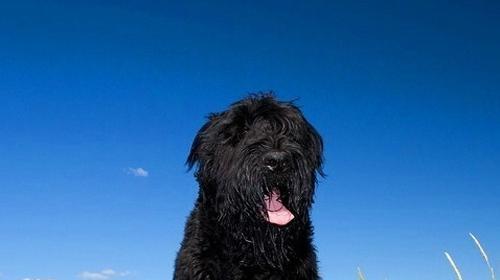black Russian terrier (details)
Because the nutrition of dog food is balanced, it is the most suitable food for dogs, so we usually choose dog food as the staple food of dogs. Therefore, the quality of dog food directly affects the dog's health. So we should try our best to choose the right dog food for dogs, so let's talk about how to choose good dog food.
I. Price
Generally speaking, dog food should be sold for every price, because the price directly determines the grade of raw materials used to make dog food. At the same time, the factors that determine the selling price of dog food include the manufacturer's advertising fee, freight, import duty, value-added tax, and sales links, all of which will be shared among the buyers. Therefore, we can preliminarily judge the price-performance ratio of dog food, and then buy relatively good dog food according to our own economic situation.
II. Packaging and Appearance
1. High-quality dog food is beautifully packaged and the packaging used is specially designed and manufactured moisture-proof bag. Low-grade dog food is generally packaged in plastic or kraft paper to further save costs, which is easy to spoil the dog food.
2. After opening the bag, high-quality dog food can ask about the natural fragrance, which will make people feel appetite. Low-grade dog food generally uses chemical additives, so it has pungent taste after opening the bag, such as strong flavor.
3. High-grade dog food is full of particles, dark and uniform in color, and oily from the inside out. Most low-grade dog food has uneven particles, shallow and uneven color, and looks relatively dry due to production technology, raw materials and other reasons. Some manufacturers have coated a layer of oil and pigment on the surface of dog food in order to make it look more marketable.
III. Composition
Now some manufacturers are suspected of misleading consumers, claiming that the higher the protein and fat in dog food, the better, but this is not the case. Normal dogs need a certain amount of protein, so that their normal functions can be maintained and continued. Normal dogs' diet must contain 16% protein, a sufficient amount of amino acids, 8% fat and 60% carbohydrate to meet their maintenance requirements.
However, these amounts are insufficient for growth and lactation. For example, when the content of protein reaches 21-23%, this amount is a little higher than the normal protein requirement (lactation period), and it also increases the safe amount. A small amount of extra protein can increase the antibody against diseases. For some young and normal dogs, excessive protein may not be harmful, but it is harmful to sick dogs. As it increases the burden on the liver, it will destroy the circulatory system of old dogs. Dogs with liver and kidney damage, such as feeding a high amount of protein, will deposit excess nitrogen in body fluids and tissues. For old and sick dogs, feeding dry dog food containing 16% protein can help them reduce the burden of decomposing protein. Excessive fat will be digested and absorbed by dogs, which will make dogs obese, and the consequences caused by this can not be ignored.

